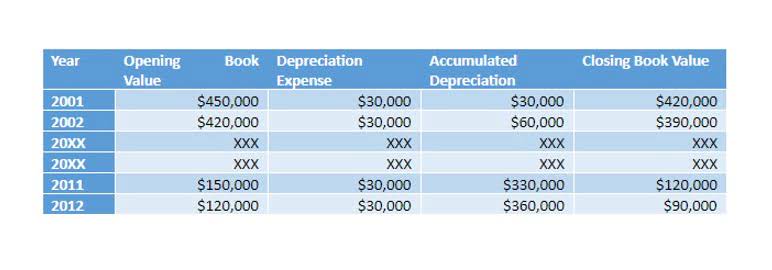
This typically occurs after you have executed exhaustive collection efforts and negotiations. Writing bad debt off removes the debt from your accounts receivable, therefore, reflecting the loss accurately on your balance sheet. In the percentage sales method, the company assigns a flat percentage to estimate the amount for the accounts receivable for the given accounting period. This is where a company will calculate the allowance for doubtful accounts based on defaults in the past. To do this, a company should go back five years, and figure out for every year the percentage of unpaid accounts. They can do this by looking at the total sales amounts for each year, and total unpaid invoices.
Estimation by Historical Percentage
Although Pareto Analysis has been mentioned as a way to estimate the allowance for doubtful accounts, it is, in fact, a good way to determine which doubtful accounts to focus on for collection efforts. It is not as effective as a method for estimating how much of an allowance for doubtful accounts you should make. The most effective and commonly used methods for determining an adequate amount to provision are discussed below. With this method, a write-off does not change the net value of accounts receivable. It reduces the amount of accounts receivable and the allowance for bad debt accounts by the same amount and leaves net A/R the same.

Accounts Receivable Method

For example, say a company lists 100 customers who purchase on credit and the total amount owed is $1,000,000. The purpose of the allowance for doubtful accounts is to estimate how many customers out of the 100 will not pay the full amount they owe. Rather than waiting to see exactly how payments work out, the company will debit a bad debt expense and credit allowance for doubtful accounts. It reduces accounts receivable on the balance sheet to reflect the amount expected to be uncollectible.
Heating and Air Company
- Rohan has a focus in particular on consumer and business services transactions and operational growth.
- Accountants and managers also make use of the doubtful accounts to make a note of the payments that are still in their collectibles’ list.
- To make things easier to understand, let’s go over an example of bad debt reserve entry.
- The second entry records the payment in full with Cash increasing (debit) and Accounts Receivable decreasing (credit) for the amount received of $15,000.
The accounts receivable aging method uses receivables aging reports to keep track of invoices that are past due. Using historical data from an aging schedule can help you predict whether or not an invoice will be paid. By monitoring customer payment behavior, we can provide insights into customer delinquency trends to help you determine which customers are at greater risk of defaulting on their payments. This, in turn, will allow you to adjust your allowance for doubtful accounts accordingly.
Regardless of your method, reviewing your allowance periodically and adjusting it accordingly is essential. This will ensure that your financial statements accurately represent the status of your company’s accounts receivable. Adjusting the estimated amount for uncollectible accounts allowance for doubtful accounts in balance sheet is a significant process that businesses carry out to ensure the accuracy of their financial statements. Later, if a customer fails to pay their account balance and the company deems the account uncollectible, they would record another journal entry to write off the bad debt.
And, having a lot of bad debts drives down the amount of revenue your business should have. By predicting the amount of accounts receivables customers won’t pay, you can anticipate your losses from bad debts. In particular, your allowance for doubtful accounts includes past-due invoices that your business does not expect to collect before the end of the accounting period. In other words, doubtful accounts, also known as bad debts, are an estimated percentage of accounts receivable that might never hit your bank account. And because the balance in the allowance for doubtful accounts reduces or offsets your accounts receivable balance, using this contra asset account will contribute to more accurate financial statements.
- Most balance sheets present these two accounts separately by showing the gross AR balance and subtracting the allowances to arrive at the outstanding AR balance.
- Thus, a company is required to realize this risk through the establishment of the allowance for doubtful accounts and offsetting bad debt expense.
- The adjustment process involves analyzing the current accounts, assessing their collectibility, and updating the allowance accordingly.
- It’s a contra asset because it’s either valued at zero or has a credit balance.
- Usually, there is a big gap of time between a credit sale and the company realizing that the credit sale cannot be collected.
- It will be deducted from the accounts receivable balance to produce Net Realizable Accounts Receivable.
Generally Accepted Accounting Principles
Consider reevaluating your accounts if the predicted allowance is less than the overdue accounts. Below are two methods for estimating the amount of accounts receivable that are not expected to be converted into cash. Allowance for doubtful accounts do not get closed, in fact the balances carry forward to the next year.
It is a contra-asset account netted against accounts receivable on the balance sheet. The allowance is increased by the provision for doubtful accounts and recoveries of previously written https://www.bookstime.com/ off receivables and is decreased by the write-off of uncollectible receivables. There are several methods available to assist the company in determining the adequacy of its allowance.
The allowance for doubtful accounts is an estimate of the portion of accounts receivable that your business does not expect to collect during a given accounting period. Accounting teams build-in these estimated losses so they can prepare more accurate financial statements and get a better idea of important metrics, like cash flow, working capital, and net income. This variance in treatment addresses taxpayers’ potential to manipulate when a bad debt is recognized. If a certain percentage of accounts receivable became bad debts in the past, then use the same percentage in the future. This approach can work well when economic conditions persist over several years, so that loss rates can be expected to persist over time.
Percentage of sales method
Industry-wise allowance for doubtful accounts can vary depending on factors like the nature of the industry, the types of customers served, economic conditions, and historical payment trends. Industries with higher credit risk or volatility maintain a higher ADA accounting compared to those with lower risk. There are various methods to determine allowance for doubtful accounts, each offering unique insights into the potential risks your accounts receivable might carry. Here’s a breakdown of the two primary methods and some additional strategies used by businesses for ADA formula and calculation. Reporting the allowances for the doubtful accounts at the time of the sale greatly enhances the validity of your financial statements. It not only provides a more accurate viewing of the reports but also improves performance outcomes drastically.